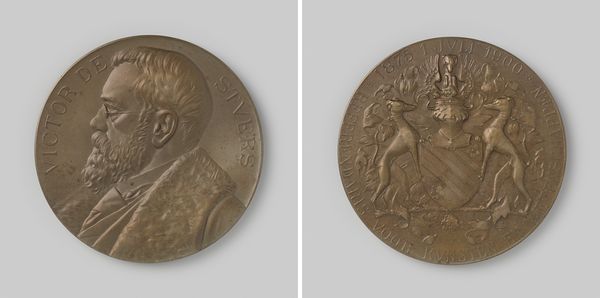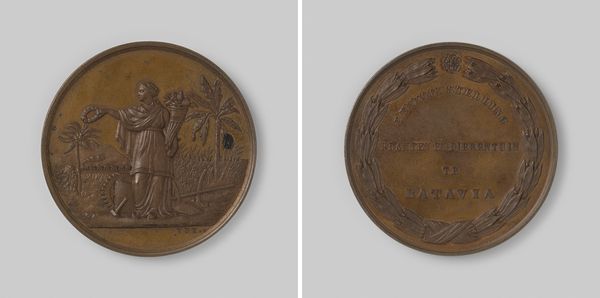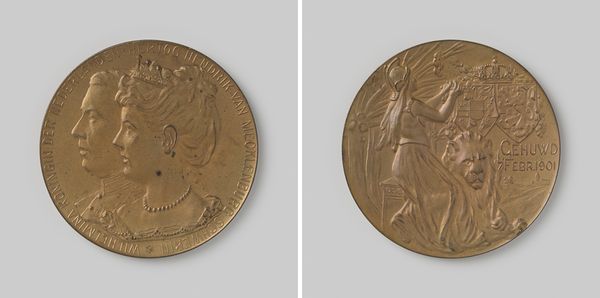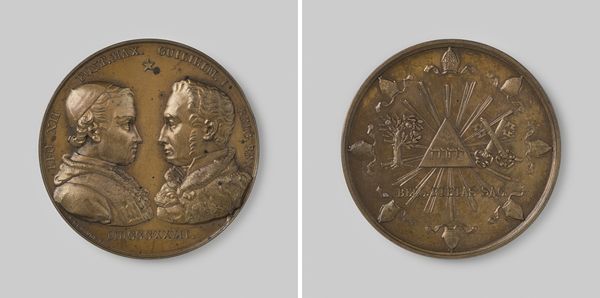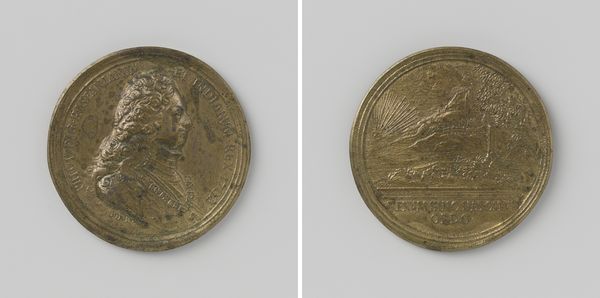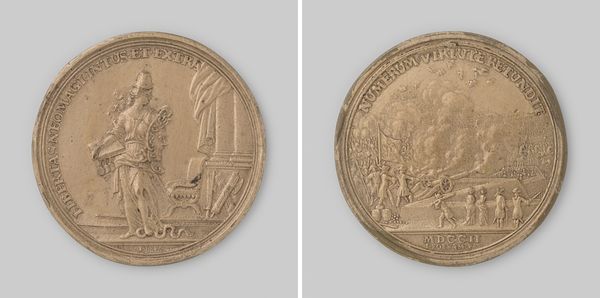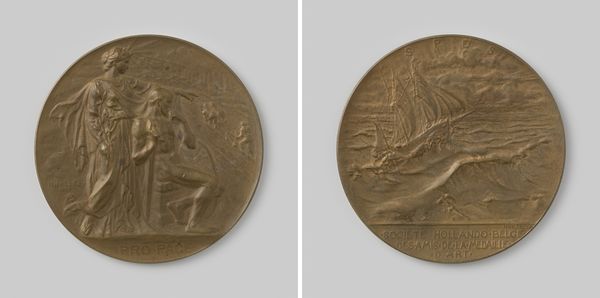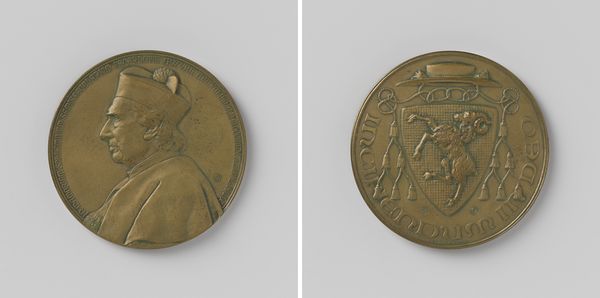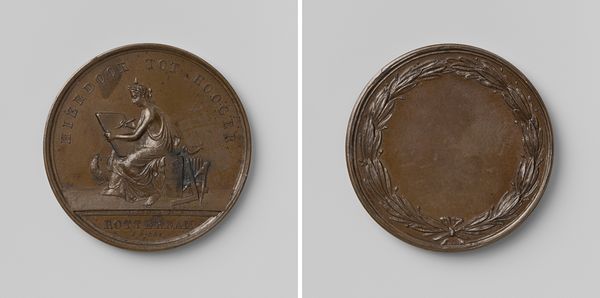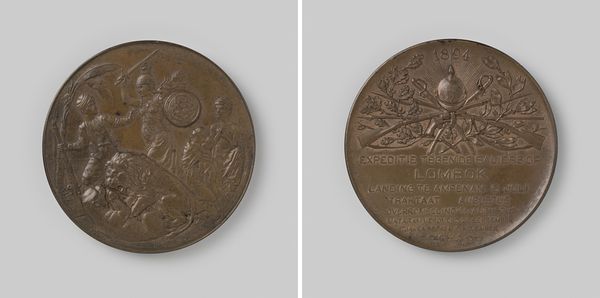
Prijspenning van het D.A. Thieme Fonds van de Vereeniging ter Bevordering van de Belangen des Boekhandels, 1900 1900
0:00
0:00
print, relief, bronze, sculpture
#
portrait
#
medal
# print
#
relief
#
bronze
#
sculpture
#
academic-art
Dimensions: diameter 5.9 cm, weight gr
Copyright: Rijks Museum: Open Domain
Editor: Here we have the "Prijspenning van het D.A. Thieme Fonds van de Vereeniging ter Bevordering van de Belangen des Boekhandels, 1900," a bronze medal likely used as a prize. It has a distinctly industrial and almost neoclassical aesthetic, a curious mix, depicting a man and what looks like a printing press. What can you tell me about this piece? Curator: It's fascinating to consider this object as a product of labor itself, a tangible representation of the book trade. Notice how the material, bronze, a relatively inexpensive and durable material, democratizes the commemoration of D.A. Thieme. It challenges traditional notions of artistry focused solely on precious metals or painting. Editor: Interesting point. I was immediately drawn to the printing press on it. Curator: The inclusion of the printing press shifts the focus from the individual, Thieme, to the means of production. It suggests a focus on the industrial and technological process which the Fund is set to benefit. This grounds the piece in a very specific, material reality of early 20th century book production. What does the medium—sculpture rather than a printed bill or broadside, for example—tell us? Editor: Well, that making this physical object suggests a lasting and potentially higher perceived value. More symbolic weight for an achievement? Curator: Precisely. And also more raw materials. How were they processed and by whom? Was the medal given for literary merit alone, or also in recognition of other labors supporting the industrial machinery and distribution channels that powered the book industry at that time? Think of all the unseen contributions of designers, paper manufacturers, bookbinders, shippers... Editor: That makes a lot of sense! It really does show a connection to all aspects of production. I hadn't thought about it like that. Curator: Examining the material and its relationship to labor practices unveils a whole world hidden within this seemingly simple medal. This really highlights that, doesn’t it? Editor: It definitely does. It shifts my perspective from just admiring a portrait to considering the wider industrial network.
Comments
No comments
Be the first to comment and join the conversation on the ultimate creative platform.


